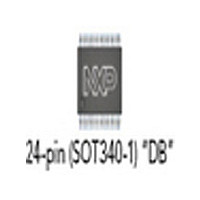TEA1095TS NXP Semiconductors, TEA1095TS Datasheet - Page 6

TEA1095TS
Manufacturer Part Number
TEA1095TS
Description
Manufacturer
NXP Semiconductors
Datasheet
1.TEA1095TS.pdf
(28 pages)
Specifications of TEA1095TS
Operating Temp Range
-25C to 75C
Package Type
SSOP
Pin Count
24
Operating Temperature Classification
Commercial
Mounting
Surface Mount
Lead Free Status / Rohs Status
Compliant
Available stocks
Company
Part Number
Manufacturer
Quantity
Price
Part Number:
TEA1095TS
Manufacturer:
PHILIPS/飞利浦
Quantity:
20 000
Philips Semiconductors
FUNCTIONAL DESCRIPTION
The values given in the functional description are typical
values except when otherwise specified.
A principle diagram of the TEA1096 is shown on the left
side of Fig.3. The TEA1096 is a transmission and
listening-in circuit. It incorporates a receiving amplifier for
the earpiece, a transmit amplifier for the microphone, a
loudspeaker amplifier and a hybrid. For more details on the
TEA1096 circuit (please refer to Data Handbook IC03 ).
The right side of Fig.3 shows a principle diagram of the
TEA1095, a hands-free add-on circuit with a transmit
amplifier, a receiver amplifier and a duplex controller.
As can be seen from Fig.3, a loop is formed via the
sidetone network in the transmission circuit and the
acoustic coupling between loudspeaker and microphone
of the hands-free circuit. When this loop gain is greater
than 1, howling is introduced. In a full duplex application,
this would be the case. The loop-gain has to be much
1997 Nov 25
handbook, full pagewidth
Voice switched speakerphone IC
coupling
acoustic
telephone
Fig.3 Hands-free telephone set principles.
line
sidetone
TEA1096
HYBRID
6
lower than 1 and therefore has to be decreased to avoid
howling. This is achieved by the duplex controller. The
duplex controller of the TEA1095 detects which channel
has the ‘largest’ signal and then controls the gains of the
transmit amplifier and the receiver amplifier such that the
sum of the gains remains constant. As a result, the circuit
can be in three stable modes:
1. Transmit mode (Tx mode): the gain of the transmit
2. Receive mode (Rx mode): the gain of the receiver
3. Idle mode: the gain of the amplifiers is halfway
The difference between the maximum gain and minimum
gain is called the switching range.
amplifier is at its maximum and the gain of the receiver
amplifier is at its minimum.
amplifier is at its maximum and the gain of the transmit
amplifier is at its minimum.
between their maximum and minimum value.
CONTROL
TEA1095
DUPLEX
MBG358
Product specification
TEA1095
















